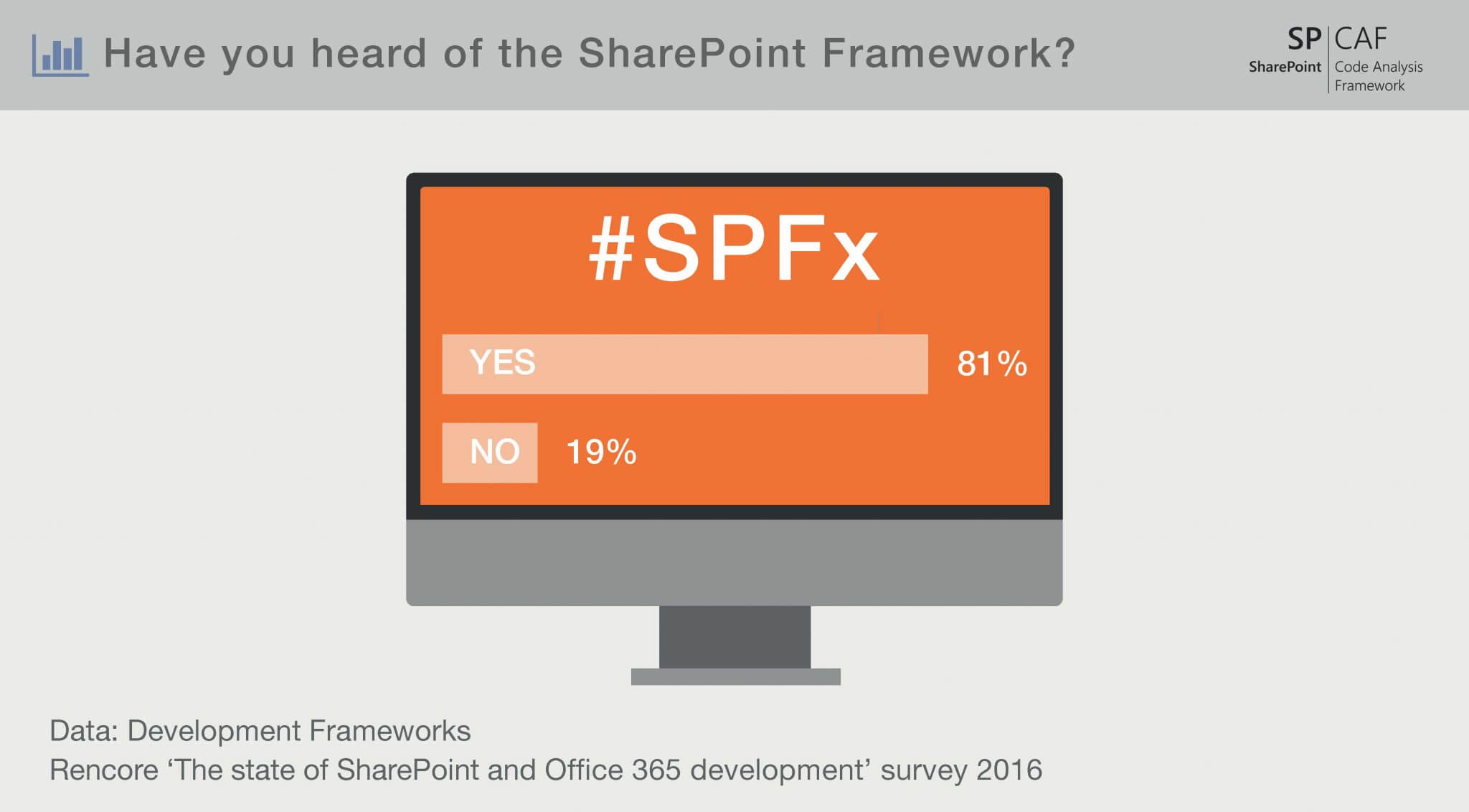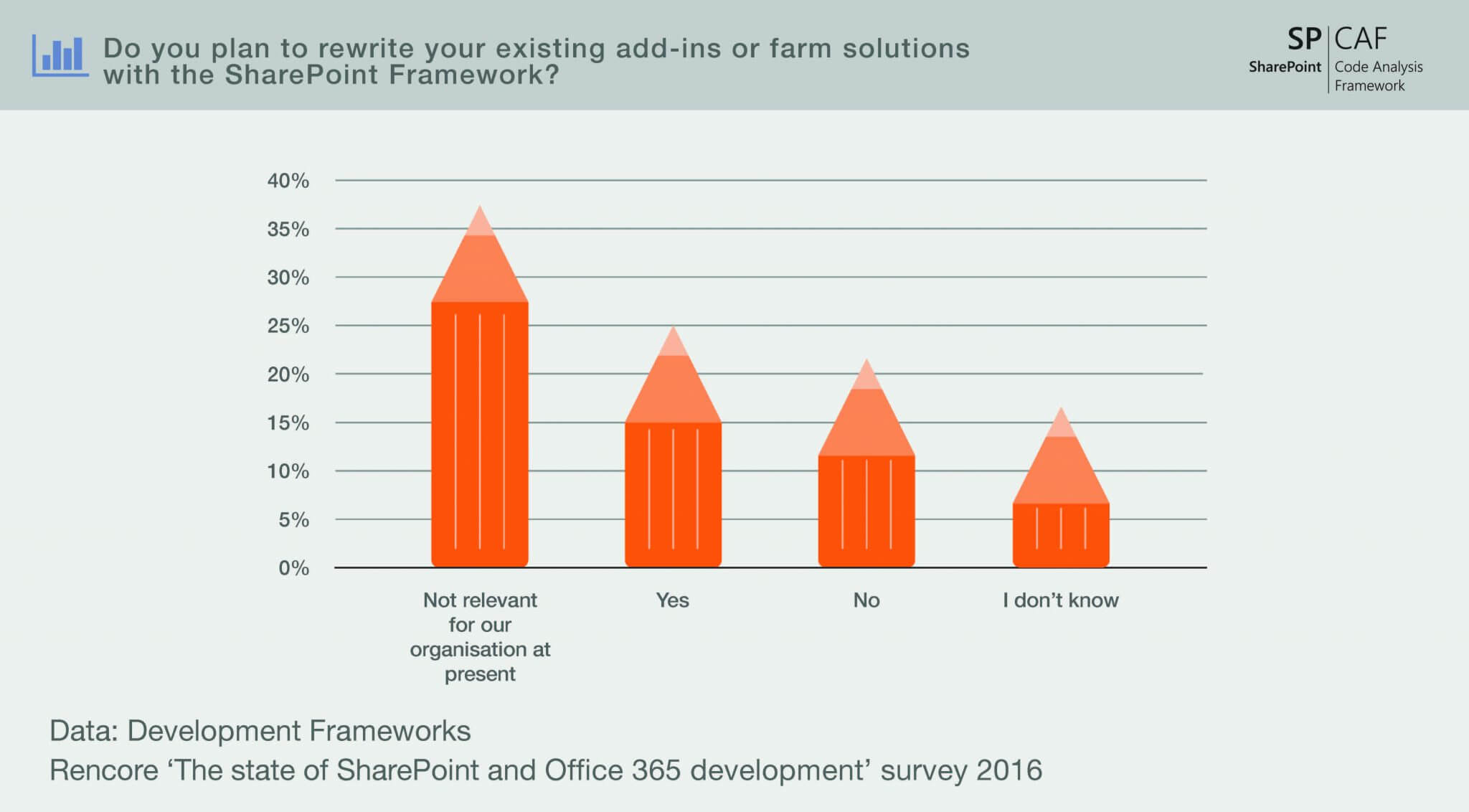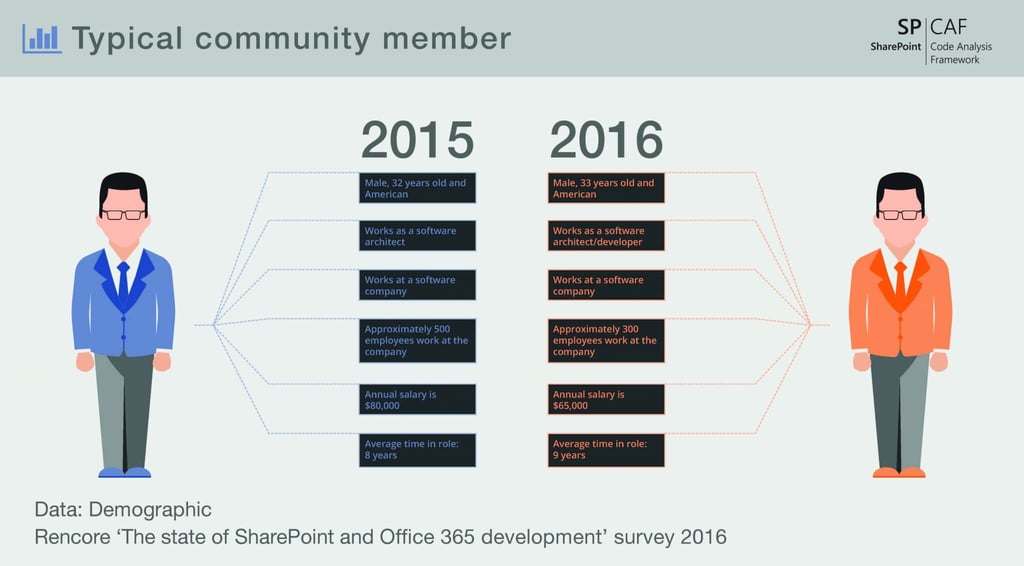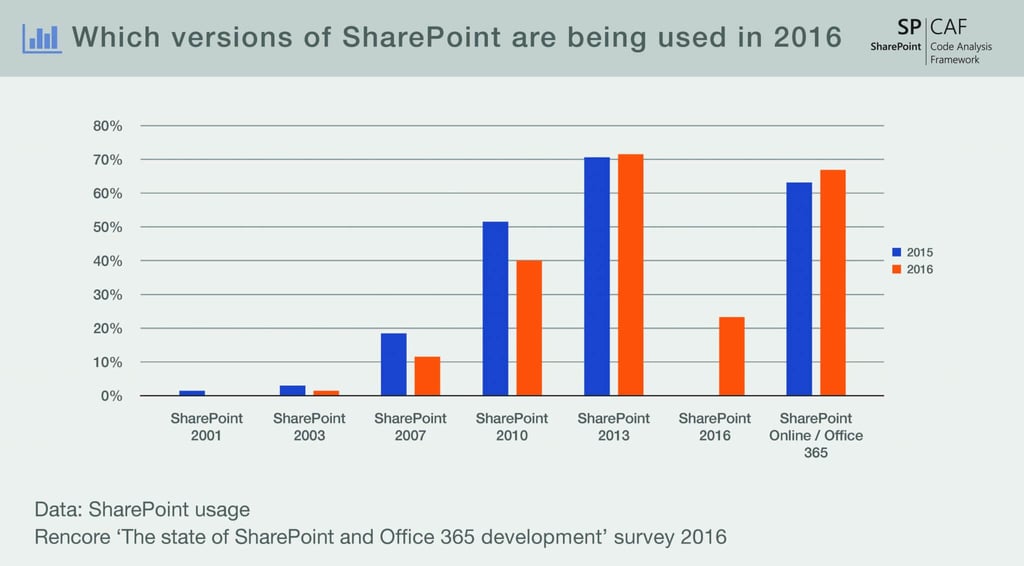Who actually builds customizations for SharePoint? What programming languages do they use? How active is the Office 365 development world? Do they have the skills they need to do their jobs, or are they falling behind?
Knowing about the community that helps develop, extend and enhance SharePoint and Office 365 is extremely important. From a CIO deciding on their organizations strategy, to agile teams working on a specific widget and SharePoint administrators trying to manage an environment, getting a good understanding of what the wider community is doing will help inform key decisions.
At Rencore, we work closely with the community surrounding SharePoint and Office 365 development and so we are always enthusiastic to learn about what developers are doing and the challenges they face. This year, we carried out our second annual State of SharePoint and Office 365 development survey (see this infographic for a breakdown of last year’s results) with the aim of tracking how the community is evolving over time and going into even more detail than last year.
Why do a survey at all?
Gartner says that the biggest single challenge facing IT decision makers in 2016 is the lack of qualified tech talent. It is a major struggle for organizations who are trying to digitally transform to find the employees with the right skills and experience to support projects. By carrying out our survey and finding out about the challenges that the community is facing (among other topics), we can begin to develop a picture of the things businesses need to do to prepare for the future.
Besides our goal of building a picture of the community, we also wanted to focus on how developers and architects were responding to Microsoft’s changes in focus on development best practice. Earlier this year, Microsoft announced the new SharePoint Framework (SPFx). The framework is intended to support more client-side development and allow developers who know JavaScript (but not necessarily C#) to build SharePoint applications. We wanted to find out how the community was reacting to this new direction from Microsoft – again, this could have big implications for investment in skills, training and hiring employees.
We launched the survey this summer and collected responses from just over 1,000 members of the community worldwide. We gained a fascinating snapshot of how the community has evolved in the last 12 months and while there was much continuity, we also spotted some big developments, too.
So, who is the typical community member?
This was one of our key questions last year – prior to 2015’s survey, no one had carried out a comprehensive study of the SharePoint community, so we wanted to have a benchmark idea of who they were. We asked a range of demographic questions to find out who these people are and draw up a picture of the ‘average developer’:
By and large, this snapshot of the typical community member has remained fairly similar. It’s interesting to note that SharePoint 2010 and 2013 remain the most commonly used iterations, despite the release of SharePoint 2016 and the growth of SharePoint Online. It also seems there has been a drop in salary – potentially explained by the fact that we got more responses from developers around the world, including from countries with a weaker currency than the US dollar.
Are companies upgrading to newer versions of SharePoint?
A key question in our survey was to find out whether companies were actually moving on to the latest versions of the platform. We didn’t notice a huge leap in adoption of SharePoint 2016 or SharePoint online (only 24%, with 17% planning to move). That said, we also discovered a ‘phasing out’ of earlier versions of SharePoint. Only two respondents out of 1,000 were using SharePoint 2001 this year. In 2015 there were six. Of course, these are small numbers but the decline shows that businesses are serious about moving forward and finally closing down old environments.
Are developers learning the skills Microsoft says they need?
As outlined above, Microsoft has been trying hard to encourage a new approach to development which encourages:
- Use of JavaScript libraries instead of .NET and C#
- Client side development for many customizations, with server-side developments being stored in Azure
- Making development possible for people without a SharePoint background
To be able to develop solutions in accordance with Microsoft’s new model will require professionals to learn new skills and methods. We asked a range of questions here to find out whether professionals were actually doing this. What did we find? Well, on one hand we got the impression that developers and architects were ‘on board’ with the new approach; they knew what it was about and many had tried the preview model:
 On the other hand, only a quarter of respondents said they planned to use it any time soon (37% said it was irrelevant at their company and a further 21% said they had no short-term plans to use it).
On the other hand, only a quarter of respondents said they planned to use it any time soon (37% said it was irrelevant at their company and a further 21% said they had no short-term plans to use it).
 What does it all tell us?
What does it all tell us?
Sign up today to receive your digital copy of the report on the day it is released. Inside, you’ll find in-depth analysis of our findings; including insights around security, maintenance, usage, the Office 365 development community, and exclusive comments from Microsoft’s Vesa Juvonen and MVP Waldek Mastykarz.
We believe that by understanding how SharePoint and Office 365 are evolving, decision makers can make the most informed choices about company IT strategy. So register today to receive your copy of the report and incorporate the latest research findings into your strategy. If you have any questions, we’d love to hear from you.
Merken




